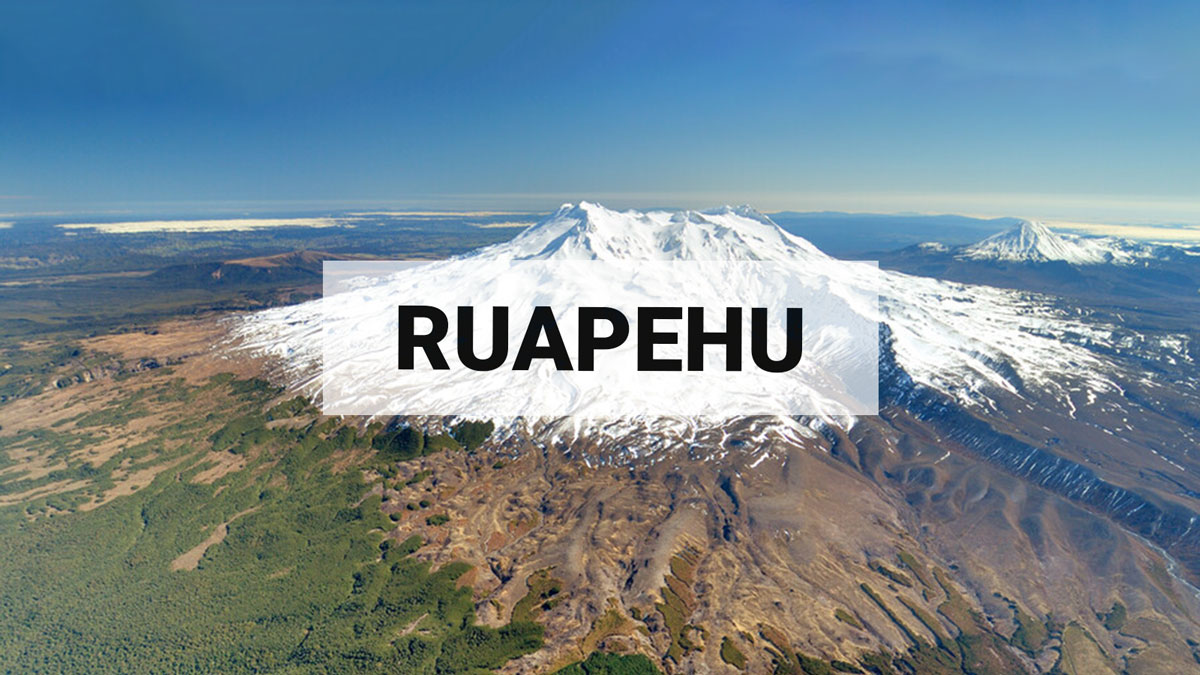
Moderate volcanic unrest continues at Mt Ruapehu. The Volcanic Alert Level remains at Level 2.
Volcanic tremor remains weak and lake temperature continues to decline. The Volcanic Alert Level remains at Level 2.
Volcanic tremor has continued at weak levels at Mt Ruapehu over the past week but has remained elevated above the background levels recorded since 2013. Crater Lake (Te Wai ā-Moe) temperature has further declined to 23 °C this past week. This is consistent with heat flow of around 100-160 MW, which corresponds to the long-term average heat flow into the lake. Lake level and overflow rates have remained elevated in response to periods of intense rainfall.
The relatively high sulphur dioxide (SO2) and carbon dioxide (CO2) measurements from mid-May and the short period since tremor and lake temperatures declined are consistent with a continued period of moderate volcanic unrest at Mt Ruapehu. Despite the observed decline in some of our monitoring parameters, there is still uncertainty about the state of the volcanic process that has been driving the current unrest period. We will carry out a gas flight to update aerial gas observations as soon as the weather allows, which will provide further insights into current volcanic processes. As noted last week, the level of unrest is now considered moderate rather than heightened, however the potential for eruptive activity remains.
Within the next four weeks, the most likely outcome of the ongoing unrest is no eruption. However, minor eruptive activity, confined to the lake basin, is also possible. Minor eruptions may generate lahars (dangerous volcanic mudflows) in the Whangaehu River.
The next most likely scenario is a relatively large eruption that impacts the summit plateau like the September 2007 or June 1969 eruption. An eruption of this size would cause life-threatening hazards on the summit plateau and in valleys impacted by lahars.
The chance of a prolonged eruptive episode or a much larger eruption, with wider ashfall impacts such as occurred in 1995-96, remains very unlikely. Such an eruption would most likely only follow a sequence of smaller eruptions.
Our interpretation of the observational data and activity is consistent with moderate volcanic unrest and therefore the Volcanic Alert Level remains at Level 2. The Aviation Colour Code remains at Yellow.
Mt Ruapehu is an active volcano and has the potential to erupt with little or no warning when in a state of moderate volcanic unrest.
The Volcanic Alert Level reflects the current level of moderately elevated volcanic unrest. The Volcanic Alert Level should not be used to forecast future activity. However, at Volcanic Alert Level 2, eruptions are usually more likely to occur than when a volcano is at Volcanic Alert Level 1.
Volcanic Alert Level 2 indicates the primary hazards are those expected during volcanic unrest; steam discharge, volcanic gas, earthquakes, landslides, and hydrothermal activity. While Volcanic Alert Level 2 is mostly associated with volcanic unrest hazards, eruptions can still occur with little or no warning. Volcanic Alert Levels 3, 4 and 5 are reserved for eruptions with varying impact distances.
For information on access to the Mt Ruapehu area, please visit the Department of Conservation’s websites on volcanic risk in Tongariro National Park in Tongariro National Park and follow the DOC Tongariro Facebook page for further updates.
For information about responding to volcanic activity there are guidelines from the National Emergency Management Agency https://getready.govt.nz/emergency/volcanic-activity/.
GNS Science and its National Geohazards Monitoring Centre continue to closely monitor Mt Ruapehu for further changes.
Yannik Behr
Duty Volcanologist
Media Contact: 021 574 541 or media@gns.cri.nz